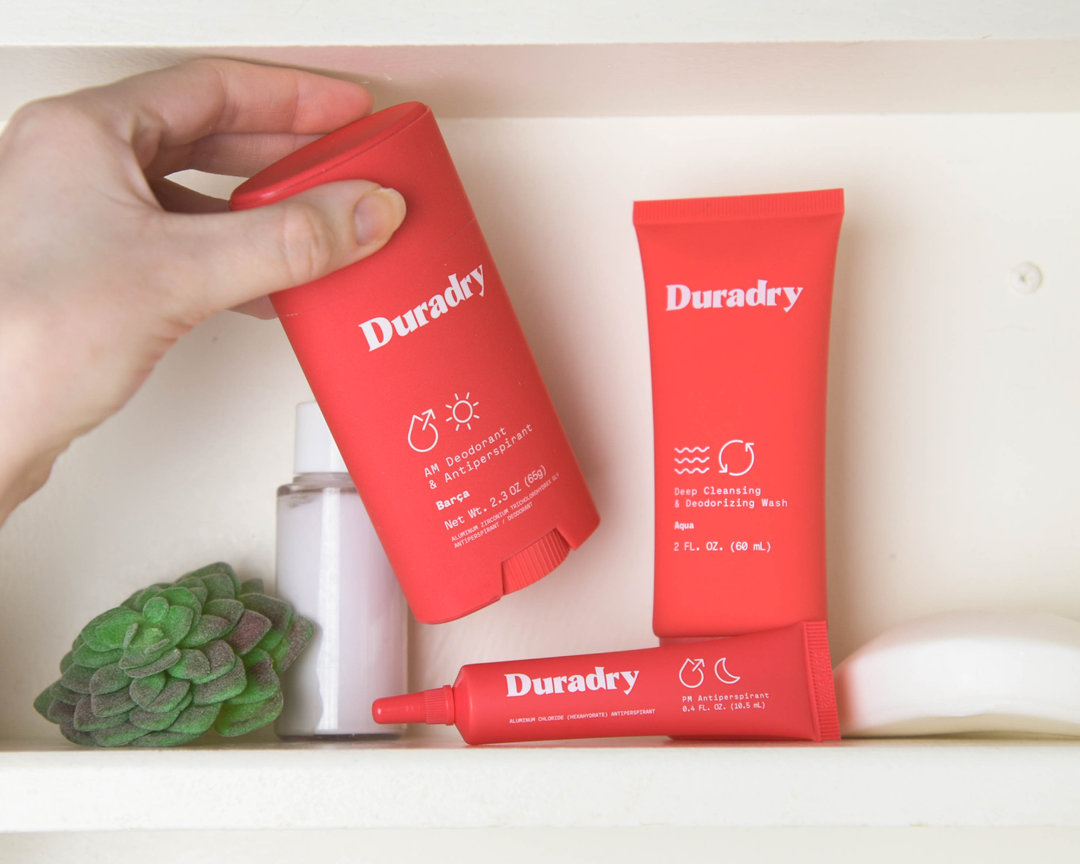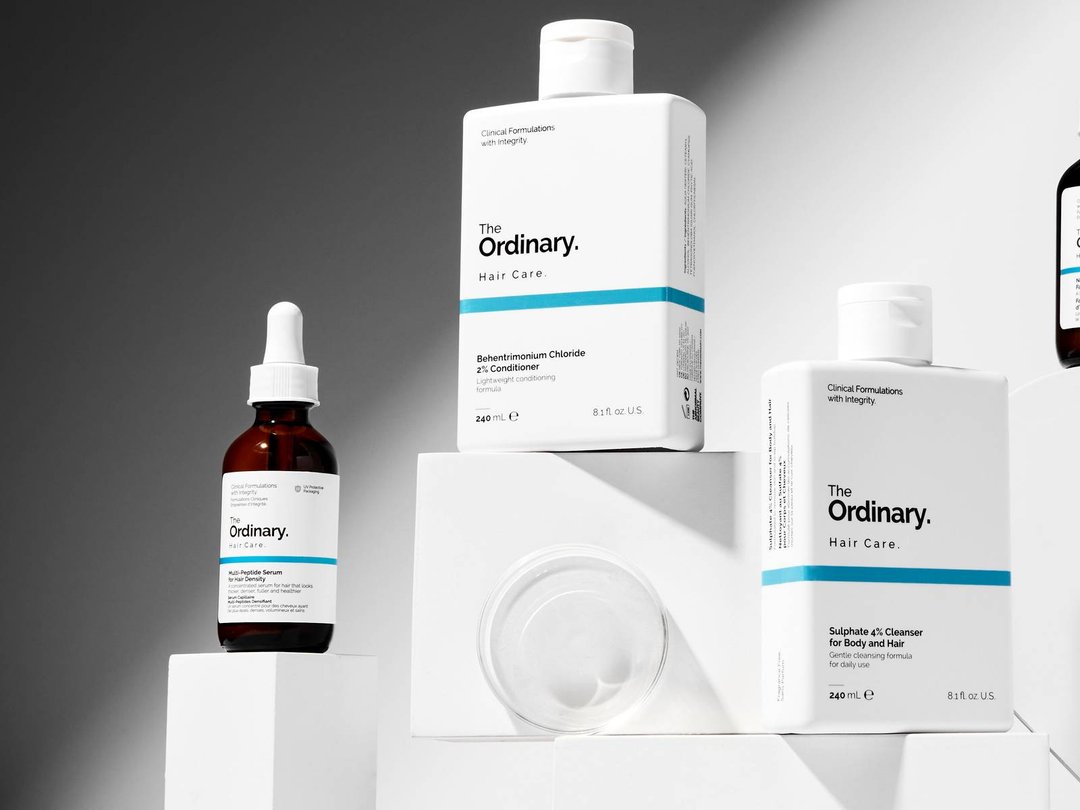Are beauty brands starting to embrace “unclean” ingredients again?
Certain ingredients have been shunned by the clean beauty movement. But not all brands believe that sulphates, aluminum and parabens are bad.

Duradry's products use aluminum, an ingredient shunned by "all-natural" deodorant brand. (Photo: Duradry)
RECIPE TESTING
Earlier this year, cosmetics brand The Ordinary hit the headlines with a bold announcement.
The skincare brand, famous for its clinical persona, was launching a haircare line. And it would contain a much maligned ingredient: sulphates.
The Ordinary argues that, when used in the correct amounts, sulphates really are one of the best ingredients for cleaning hair (The Ordinary’s shampoo contains 4% sulphates). It’s a strong statement to make as advocates of “clean” beauty have been winning the public PR battle against this group of ingredients, which they say can cause irritation and strip the hair of moisture.
No other brand has come out with a statement on lab-made cosmetic ingredients that is quite as bold (or polarizing) as this one. But look closely, and you'll see a subtle shift taking place in the way brands talk about ingredients.
On its website, Regimen Lab says that it “never [includes] ingredients just for vanity or label appeal,” and that its products are “free from fear mongering.” On its FAQ page, in answer to the question “are your products clean?”, skincare brand Dieux says “clean definitions don’t mean much. There is no standard, and without a regulatory arm of the FDA monitoring it, it’s a lot of faith in corporations … Nuance is everything.”
Ourself, which launched in February, is a skincare brand that says its products can mimic cosmetic procedures — it does not describe itself as a clean brand, and the only ingredients it explicitly avoids are synthetic fragrances, phthalates and parabens. Duradry, meanwhile, is a deodorant brand whose recent launch is notable because its product contains aluminium — an ingredient shunned by the recent wave of all natural deodorant brands, but one of the few approved ingredients that can actually stop excessive sweating.
“We get asked all the time, are you clean?” says Kimmy Scotti, a partner at venture capital firm 8VC and the cofounder of skincare brand Fig.1. “It’s so interesting, because clean is a marketing word. [It’s] not a certification.”
Clean beauty’s impact
Given how prevalent the word “clean” is in the beauty space, consumers can be forgiven for thinking there is a set definition for products that use the label.
The reality is more complex. The conversation around clean beauty has proliferated on social media, not always the best source of scientifically-sound information. And in response to the backlash surrounding some ingredients, brands and retailers have come up with their own frameworks that dictate which ingredients are considered “dirty,” and that don’t always match up.
Take Drunk Elephant: the brand has its own “suspicious six” list of ingredients that it avoids. But while it has secured Sephora’s clean seal of approval, its formulas don’t quite pass Credo’s “dirty list," which contains 2,700 ingredients.
Still, this circumstance has not stopped clean beauty from taking over the shelves. In July 2021, WWD reported that 30% of Sephora’s sales growth has come from the 92 brands sold as part of its Clean at Sephora program. More broadly, in 2019, products in the $19 billion prestige beauty market that labeled themselves as “natural” grew 14% year-on-year, while those calling themselves “clean” were up 39%, according to the Washington Post.
It’s easy to understand why consumers might be drawn to the promise of clean beauty. The Food and Drug Administration, which regulates cosmetic ingredients, bans just 11 ingredients from personal care products. The EU, considered to be the gold standard when it comes to cosmetic safety, prohibits the use of over 1,300. Concerned about the discrepancy, consumers have grown wary. For emerging brands, this has created an environment where they are pressured to conform.
Jack Benzaquen, the founder of Duradry, says that he has been turned down by investors who told him they were only interested in supporting “all natural” brands in the personal care space. Scotti says that Fig.1 doesn’t call itself clean, but has opted to avoid parabens and sulphates, because those are the ingredients consumers are most turned off by. “Being a new brand, we’re not going to come out swinging and saying we’re using parabens,” she says. “So we formulate without them. But do I think they’re unsafe? No.”
The founder of skincare brand Bravura London Amanda Elias, says she also “caved to peer pressure” when deciding to omit parabens from her formulas. “I don’t have the budget The Ordinary has. I’m always trying to educate people on safety and how improperly preserved products are more of a risk than parabens [used as a preservative in cosmetics], but people hear 'parabens' and freak out. Fear marketing is so prevalent.” A 2004 study linked parabens with breast cancer — however, it is considered a flawed analysis.
“You hear the headline, but don’t know the detail behind it,” said a regulatory affairs professional who works for one of the UK’s largest beauty retailers, whose identity is known to Thingtesting but asked to remain anonymous. “Everything is safety tested before it is launched,” she adds.
The studies which tend to go viral are ones “with very limited but negative” results, she says, adding that many consumers don’t realize that ingredients are tested by regulators at far higher levels than would ever appear in a final consumer product. This means that the percentage levels that end up being approved for use are well within the margins of safety.

In Febraury, The Ordinary announced that it was "pro-sulphate". (Photo: Deciem)
Does this ingredient work?
Brands that are breaking away from clean beauty peer pressure are instead focusing on starting a new conversation, asking: does this ingredient actually work? And is it safe? If the answers are yes, they believe consumers should have no problem buying their products.
And they’re also not afraid that, when the question is asked of ingredients that are considered clean, the answer will sometimes be no. While Kojic acid, a natural ingredient derived from mushrooms, has been rising in popularity, regulators have recently been advising that it is not safe when used in cosmetic products at 1%. It is currently undergoing further review in the EU.
Meanwhile, cosmetic scientist Tumi Siwoku points out that while natural ingredients are often assumed to be earth friendly, there are a number of synthetic cosmetic ingredients, such as fragrances, which have actually been developed with sustainability in mind. Having a synthetic options allows scientists to “keep reproducing it, which means you don’t have to bring a natural source to a place of extinction. It’s like lab diamonds,” she explains.
For customers looking for products that perform, synthetic ingredients often deliver what’s wanted. “From a formulation perspective, sulphates are very cost effective and have great detergency properties. They’ll clean your hair really well, and they’re very good at what they do,” says Siwoku. “I think people are coming back to that space of, does this work for me? Rather than, is this natural?”
On the topic of deodorant, Benzaquen says the shift towards natural has essentially ignored a large number of consumers — those who actually want to sweat less during the day.
“Millions of people need better sweat protection. There are products from incumbents, but there are things that we can do to improve those products and innovate, just as people have on the [natural] end of the formula spectrum,” he says. “Efficacy is important, and we can’t forget about that segment of the market.”